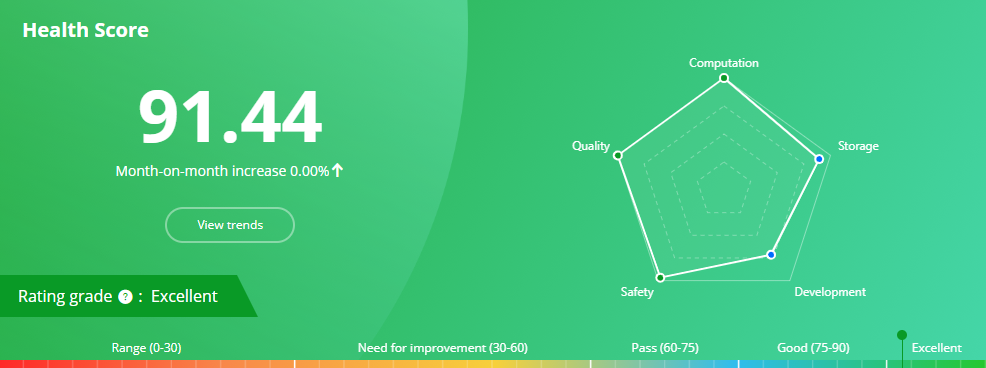Role | Permission description | References |
Tenant-level data governance administrator | A tenant-level data governance administrator can view governance reports, governance issues, and check events from the global perspective and perform relevant rectification operations. | For information about how to grant permissions to a RAM user, see the Manage tenant-level roles section in the Manage permissions on global-level services topic. For information about the permissions of a data governance administrator, see the Data Governance section in the Permissions of built-in workspace-level roles topic.
|
Workspace Administrator | A workspace administrator can view governance reports from the workspace perspective. If you want to view governance reports in a workspace from the workspace perspective, you must be assigned the Workspace Administrator role of the workspace. | |
Workspace-level data governance administrator | A workspace-level data governance administrator can view and manage the data governance content of the workspace to which the role belongs. Note RAM users that are assigned this role cannot view the governance effectiveness of all workspaces in the current region from the global perspective, and cannot manage global governance operations, such as enabling check items globally. If you want to perform the preceding operations from the global perspective as a RAM user, make sure that the RAM user is assigned the tenant-level data governance administrator role. | |
Common user | Common users are the personnel who handle detected issues in Data Governance Center. A common user can view check events and governance issues from the personal perspective and perform rectification operations. If you want to perform rectification operations on issues that are identified in a workspace of a tenant, you must be added to the workspace as a member. Note By default, except for Alibaba Cloud accounts and RAM users to which the AliyunDataWorksFullAccess policy is attached, all other users are common users within a tenant. | For information about how to grant permissions to users, see Add a RAM user to a workspace as a member and assign roles to the member. |
 Elastic Compute Service (ECS)
Elastic Compute Service (ECS)
 Container Compute Service (ACS)
Container Compute Service (ACS)





 DataWorks provides workspaces in standard and basic modes. The node development process varies based on the workspace mode. In this topic, a workspace in standard mode is used to show how to develop a node. The actual data development process varies based on the mode of your workspace. For information about the common development process in workspaces in different modes, see
DataWorks provides workspaces in standard and basic modes. The node development process varies based on the workspace mode. In this topic, a workspace in standard mode is used to show how to develop a node. The actual data development process varies based on the mode of your workspace. For information about the common development process in workspaces in different modes, see 























